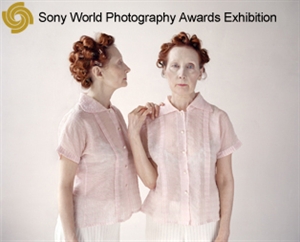DATOS GENERALES
Con obra de
Descripción de la Organización
About the Company
In 1841, F.W. Hasselblad & Co was founded by Fritz Viktor Hasselblad, Victor Hasselblad’s great grandfather. The firm imported and sold small-wares, e.g. haberdashery and sewing items. In the 1870s, the Hasselblad House was built at Lilla Bommen in Gothenburg. It contained the firm’s offices and warehouse; later adjoining buildings were added to the first property. It was here the Hasselblad cameras were made from the late 1940s to 2003, when the company moved to Norra Älvstranden on Hisingen.
The founder’s son, Arvid Viktor Hasselblad, took over the firm in 1871. In the 1880s, Hasselblad began importing photography products and became the principal retailer in Sweden for the Eastman Kodak Company. Hasselblad also sold cameras made by another Gothenburg firm, Hugo Svensson & Co: the Hasselblad Svenska Express and the Hasselblad SVEA camera.
In 1941, Hasselblad manufactured its first camera: a military aerial camera. After the end of WWII, the company manufactured cameras for civilian use, the first of these was made in 1948. Victor Hasselblad travelled to New York to launch the Hasselblad camera: the world’s first single lens medium format camera with interchangeable lenses and film magazines. The camera was a sensation. Photographer Ansel Adams received a test camera from Hasselblad. In exchange, Hasselblad would get a series of pictures to use in advertising campaigns. Adams was very interested and on his own initiative began testing the camera. Several of his ideas regarding improvements were implemented by the company in Gothenburg.
In the early 1960s, NASA (National Aeronautics and Space Administration) started using the Hasselblad camera to document the space missions. Astronaut Walter Schirra introduced the Hasselblad 500C to NASA in 1962. Official collaboration between NASA and Hasselblad commenced around 1965 when the company made a customised camera for the space flights and the moon landing in 1969. The collaboration continued until 2003.
Erna and Victor Hasselblad
Victor Hasselblad and Erna (née Nathhorst) were married on the 19 June 1934 in Seglora Church at Skansen in Stockholm. In 1937, the company AB Victor Hasselblad was registered and a store with the name Victor Foto opened at Kungsportsplatsen in Gothenburg. Together, Erna and Victor Hasselblad ran the company which developed films, made prints and enlarged pictures. After a time, they also opened a camera workshop. They built up a worldwide network of both personal and professional contacts.
The Hasselblad Foundation
After Victor Hasselblad’s death in 1978, Erna and Victor Hasselblad’s Foundation was founded in 1979 in accordance with the couple’s last will and testament. The Foundation aims to promote research and academic teaching in the natural sciences and photography. This is achieved by awarding grants and stipends to the natural sciences and photography, a prestigious international photography award and stipends and grants to research projects in photography.
The Foundation also conducts its own research into photography. The Hasselblad Center opened in 1989. The Hasselblad Foundation’s research library opened in 1999.

Creación, 09 mar de 2018
Óscar Muñoz recibe el prestigioso Premio Hasselblad 2018
Por PAULA ALONSO POZA
La dotación del premio, convocado anualmente por la sueca Hasselblad Foundation, es de 1.000.000 coronas (98.000 euros) e incluye la celebración de una muestra individual. Es el quinto creador iberoamericano ...

Actualidad, 29 mar de 2012
Convocado Generaciones 2013 en Madrid y suspendido un importante concurso en Barcelona
Por ARTEINFORMADO
La semana ha estado dominada por la nueva convocatoria Generaciones 2013, de la Fundación Caja Madrid, que por sí sola acapara las tres cuartas partes de la dotación asignada a ...

Exposición. 16 abr de 2025 - 11 may de 2025 / Centro Botín / Santander, Cantabria, España

Formación. 08 may de 2025 - 17 may de 2025 / Museo Nacional Centro de Arte Reina Sofía (MNCARS) / Madrid, España